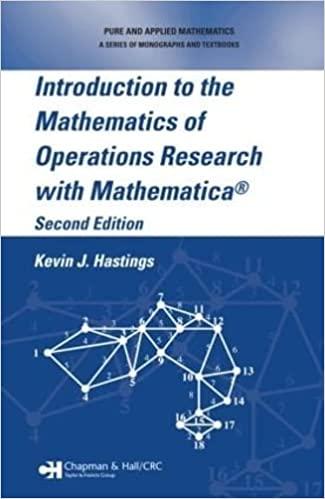Consider a step in the Transportation Algorithm in which there remains exactly one supply constraint that has
Question:
Consider a step in the Transportation Algorithm in which there remains exactly one supply constraint that has no basic variable corresponding to it, and there are two or more unused demand constraints. Show that it cannot be the case that when a new basic variable is selected, the final supply constraint is the binding constraint. (Hint: express the current constant in the unused supply equation in terms of the demand constants that have been subtracted from it up to this step, and argue by contradiction that this constant must exceed the demand constant in the demand constraint in which the entering basic variable appears.)
Fantastic news! We've Found the answer you've been seeking!
Step by Step Answer:
Related Book For 

Introduction To The Mathematics Of Operations Research With Mathematica
ISBN: 9781574446128
1st Edition
Authors: Kevin J Hastings
Question Posted:





